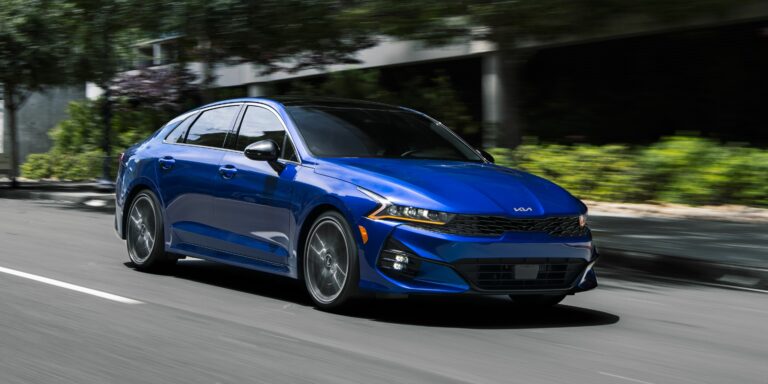Most Reliable Car Brands 2016: A Comprehensive Guide to Enduring Quality
Most Reliable Car Brands 2016: A Comprehensive Guide to Enduring Quality cars.truckstrend.com
In the ever-evolving automotive landscape, the concept of reliability stands as a cornerstone of consumer confidence. For many car buyers, the assurance that their vehicle will perform consistently, require minimal unscheduled repairs, and maintain its integrity over time is paramount. As we look back at the automotive year 2016, understanding which brands truly excelled in dependability offers invaluable insights, not just for those considering a pre-owned 2016 model today, but also for appreciating the long-term trends in automotive engineering and manufacturing.
The year 2016 marked a period of significant transition in the auto industry. Emerging from the shadow of the 2008 financial crisis, manufacturers were increasingly focused on integrating new technologies—from advanced driver-assistance systems (ADAS) to sophisticated infotainment—while simultaneously striving for fuel efficiency and robust build quality. In this dynamic environment, identifying the "Most Reliable Car Brands 2016" became crucial for consumers seeking peace of mind, lower long-term ownership costs, and enhanced safety. This comprehensive guide will delve into what made certain brands stand out, how reliability was measured, and what practical advice this historical data offers for today’s car buyers.
Most Reliable Car Brands 2016: A Comprehensive Guide to Enduring Quality
Understanding Automotive Reliability: The 2016 Landscape
Defining "reliability" in the automotive context typically refers to a vehicle’s ability to operate without defects or failures over a specified period. This encompasses everything from the powertrain and electronics to the fit and finish of interior components. For the 2016 model year, reliability assessments primarily focused on initial quality and predicted long-term dependability, based on data from vehicles that were then one to three years old (for long-term studies) or brand new (for initial quality studies).
The primary arbiters of automotive reliability in 2016, as they remain today, were independent organizations like J.D. Power and Consumer Reports.
- J.D. Power Vehicle Dependability Study (VDS): This study measures the number of problems experienced per 100 vehicles (PP100) by original owners of three-year-old vehicles. For 2016 model year reliability, the relevant VDS would have reflected the 2019 study, examining vehicles purchased in 2016. However, J.D. Power also conducted an Initial Quality Study (IQS), which surveyed owners after 90 days of ownership, providing early indicators for the 2016 model year. Lower PP100 scores indicate higher reliability.
- Consumer Reports Annual Auto Reliability Survey: Consumer Reports (CR) gathers data from its subscribers on problems they’ve had with their vehicles in the past 12 months. This allows them to predict reliability for new models based on previous model years and to report on the dependability of current and past models. CR’s methodology often considers a broader range of issues, including minor annoyances, which can differ from J.D. Power’s focus on more significant defects.
By synthesizing data from these authoritative sources, a clear picture of the most dependable brands in 2016 emerged, highlighting manufacturers that consistently delivered on their promise of quality and durability.

The Pillars of Dependability: Top Brands of 2016
Based on the aggregate data from leading reliability studies in and around 2016, several brands consistently rose to the top, earning their reputation for enduring quality. These brands were often characterized by meticulous engineering, proven componentry, and a focus on long-term owner satisfaction.
- Lexus: Consistently ranked at or near the top, Lexus (Toyota’s luxury division) was the undisputed leader in reliability. Their commitment to conservative, well-tested technology, robust powertrains, and exceptional build quality ensured minimal issues for owners.
- Toyota: The parent company of Lexus, Toyota, maintained its legendary reputation for durability. Their vehicles, from the compact Corolla to the rugged Highlander, were known for their strong mechanicals and ability to withstand years of rigorous use with few problems.
- Mazda: Mazda surprised many by frequently outperforming some long-established players. Their "Skyactiv" technology, which focused on optimizing existing internal combustion engine design rather than introducing complex new systems, contributed to their strong reliability scores.
- Honda: Another Japanese stalwart, Honda, consistently demonstrated high levels of reliability across its lineup. Known for refined engines and transmissions, Honda vehicles like the Civic and CR-V were popular choices for their blend of practicality and dependability.
- Subaru: While perhaps not reaching the absolute top tier, Subaru earned a strong reputation for the reliability of its Boxer engines and symmetrical all-wheel-drive systems, making them a dependable choice, particularly in regions with challenging weather.
- Kia & Hyundai: These Korean automakers continued their impressive ascent in quality and reliability. In 2016, both brands showed significant improvements, often ranking above some traditional American and European marques, a testament to their aggressive investment in engineering and manufacturing quality. Their long warranties also underscored their confidence in their products.
- Audi: Among luxury European brands, Audi often led the pack in reliability, showcasing a commitment to quality control despite incorporating sophisticated technologies. While not always matching the Japanese luxury brands, they represented a strong choice in the premium segment.
These brands achieved their status through a combination of engineering prowess, stringent quality control, and often, a measured approach to introducing new, unproven technologies.
Factors Driving Reliability in 2016 Vehicles
Several key elements contributed to a vehicle’s reliability performance in 2016:
- Engineering and Design Philosophy: Brands that prioritized robust, proven components and conservative design over bleeding-edge, unverified technologies often fared better. This meant using well-understood engine and transmission designs, and integrating new features only after extensive testing.
- Manufacturing Quality and Process Control: Superior assembly techniques, tight tolerances, and rigorous quality checks at every stage of production were critical. Automated processes, skilled labor, and a "right-first-time" philosophy minimized defects.
- Materials Science and Component Durability: The quality of materials used, from engine components to interior plastics and wiring harnesses, directly impacted longevity. Resistance to corrosion, wear, and fatigue was essential.
- Technological Integration: While new technologies were a selling point, their seamless and reliable integration was a challenge. Brands that managed to implement infotainment systems, navigation, and driver-assistance features with minimal glitches or software bugs scored higher. In 2016, infotainment issues were a common source of complaints, even for otherwise reliable brands.
- Supply Chain Management: The reliability of a car is only as good as its weakest link. Brands with strong relationships with their suppliers and rigorous quality control over outsourced components tended to produce more reliable vehicles.
- Extensive Testing and Validation: Before a 2016 model rolled off the assembly line, it underwent countless hours of real-world and simulated testing to identify and rectify potential weaknesses. This included everything from extreme climate testing to long-term durability runs.
The Tangible Benefits of Owning a Reliable 2016 Car
Opting for a reliable 2016 model, even years later, offers numerous advantages:
- Lower Total Cost of Ownership (TCO): Fewer unexpected repairs mean lower maintenance costs over the vehicle’s lifespan. This directly translates to significant financial savings.
- Enhanced Safety: Reliable vehicles are less likely to experience sudden mechanical failures that could compromise safety. Critical systems like brakes, steering, and airbags perform as expected.
- Peace of Mind: Knowing your car is dependable reduces stress and anxiety, especially during long trips or daily commutes. It allows you to focus on the road, not on potential breakdowns.
- Strong Resale Value: Reliable cars are highly sought after in the used car market, meaning they typically depreciate slower and command higher resale prices.
- Reduced Downtime: A reliable car spends less time in the repair shop, keeping you mobile and productive.
- Environmental Impact: A car that lasts longer and requires fewer replacement parts is inherently more sustainable, reducing waste and the demand for new manufacturing.
Navigating the 2016 Market: Tips for Consumers
For those considering a 2016 model today, leveraging reliability data from that era is crucial. Here’s how to apply those insights:
- Consult Multiple Sources: While this article highlights general trends, always cross-reference data from J.D. Power, Consumer Reports, and owner forums for the specific make and model you’re interested in.
- Focus on Specific Models, Not Just Brands: While a brand may be reliable overall, individual models or even specific powertrains within a brand can have varying reliability records. Research the exact trim and engine you’re considering.
- Prioritize Maintenance Records: Even the most reliable 2016 car will suffer without proper maintenance. Always request a detailed service history. A car with consistent, documented maintenance is often a better buy than a "more reliable" brand with a spotty history.
- Get a Pre-Purchase Inspection (PPI): For any used car, especially one from 2016, a thorough PPI by an independent, trusted mechanic is non-negotiable. They can identify existing issues or potential future problems.
- Consider Certified Pre-Owned (CPO) Options: If available, a CPO 2016 model from a reputable brand often comes with an extended warranty and a multi-point inspection, offering an added layer of security.
- Test Drive Extensively: Pay attention to how the car drives, sounds, and feels. Test all electronic components, lights, and accessories.
Challenges and Nuances in Assessing 2016 Reliability
While 2016 reliability data provides a strong foundation, it’s important to acknowledge some complexities:
- Evolution of Issues: What constituted a "problem" in 2016 might have evolved. Early infotainment glitches, for instance, might have been patched via software updates since.
- Individual Vehicle Variance: No two cars are identical. Even within a highly reliable model line, an individual vehicle’s history (driving style, environment, maintenance) significantly impacts its current condition.
- Recall Handling: Even reliable brands issue recalls. The key is how quickly and effectively they address them. A recall doesn’t necessarily mean a car is unreliable, but rather that the manufacturer is proactively fixing a potential issue.
- Impact of New Technologies: 2016 saw an increase in complex electronic systems. While Japanese brands often took a more conservative approach, some European and domestic brands integrated more cutting-edge (and sometimes less proven) tech, which could lead to initial glitches.
Concluding Summary
The "Most Reliable Car Brands 2016" were those that meticulously engineered their vehicles, rigorously controlled their manufacturing processes, and prioritized the long-term satisfaction of their owners. Lexus, Toyota, Mazda, Honda, and Subaru consistently demonstrated superior dependability, with Kia and Hyundai making significant strides. Owning a reliable 2016 vehicle translates directly to lower ownership costs, greater peace of mind, and stronger resale value.
For anyone considering a 2016 model today, this historical data serves as an invaluable guide. However, it must be paired with diligent research into specific models, a thorough review of maintenance records, and a professional pre-purchase inspection. While the automotive world continues to innovate at a rapid pace, the lessons learned from the reliability leaders of 2016 remain timeless: quality, thoughtful engineering, and a commitment to durability are the true hallmarks of a vehicle built to last.
Most Reliable Car Brands 2016: Overview Table
Below is a table summarizing the top reliable car brands of 2016, their general reliability standing, key characteristics contributing to their dependability, and a typical MSRP range for their popular models in 2016.
| Brand | Reliability Standing (2016)* | Key Reliability Characteristic | Typical 2016 MSRP Range (Popular Models)** |
|---|---|---|---|
| Lexus | Consistently Top-Tier | Meticulous engineering, proven powertrains, high-quality materials, conservative tech adoption. | $32,000 – $80,000+ |
| Toyota | Excellent | Legendary durability, robust mechanicals, widespread parts availability, conservative design. | $18,000 – $45,000+ |
| Mazda | Very Good / Excellent | Focus on driving dynamics with robust, less complex components; efficient and reliable Skyactiv tech. | $18,000 – $32,000+ |
| Honda | Very Good / Excellent | Strong engineering, efficient and reliable engines and transmissions, balanced performance. | $19,000 – $40,000+ |
| Subaru | Good / Very Good | Reliable Symmetrical All-Wheel Drive system, durable Boxer engines, strong safety focus. | $22,000 – $40,000+ |
| Kia | Good / Very Good (Improving) | Significant quality improvements, value-packed features, strong warranty backing. | $16,000 – $35,000+ |
| Hyundai | Good / Very Good (Improving) | Similar to Kia, aggressive quality push, focus on core components, long warranty coverage. | $16,000 – $35,000+ |
| Audi | Good | Premium build quality, sophisticated engineering, though some complex electronics. | $32,000 – $70,000+ |
- Reliability Standing (2016) is based on a synthesis of J.D. Power, Consumer Reports, and other industry assessments from the period.
- The "Typical 2016 MSRP Range" represents the original manufacturer’s suggested retail price for popular models from the brand in 2016. Prices varied significantly based on specific model, trim level, optional features, and regional differences. Current used car prices will differ substantially based on condition, mileage, and market demand.
Frequently Asked Questions (FAQ) about Most Reliable Car Brands 2016
Q1: What methodology was used to determine the most reliable car brands in 2016?
A1: The primary methodologies involved extensive surveys of car owners. J.D. Power’s Initial Quality Study (IQS) measured problems experienced by owners within the first 90 days of ownership, while their Vehicle Dependability Study (VDS) looked at problems experienced over three years. Consumer Reports gathered data from its subscribers on problems encountered over the past 12 months. These studies typically reported problems per 100 vehicles (PP100) or used a rating system to rank brands and models.
Q2: Are 2016 reliable cars still good buys today?
A2: Yes, many reliable 2016 models can still be excellent used car buys today. Brands like Toyota, Lexus, and Honda are known for their longevity and can easily offer many more years of dependable service, provided they have been well-maintained. Always get a pre-purchase inspection and review the service history.
Q3: Does "reliable brand" mean every model from that brand is reliable?
A3: Not necessarily. While a brand may have a strong overall reliability record, specific models or even particular powertrains (engine/transmission combinations) within that brand might have known issues. It’s crucial to research the reliability of the specific model and trim you are interested in, in addition to the overall brand reputation.
Q4: How can I check the reliability of a specific 2016 model I’m interested in?
A4: You can check historical data from Consumer Reports (requires subscription for detailed data), J.D. Power archives, and reputable automotive review sites that aggregate reliability data. Websites like Edmunds, Kelley Blue Book, and owner forums can also provide insights into common issues reported by owners of specific 2016 models. A pre-purchase inspection by a trusted mechanic is also highly recommended.
Q5: Do luxury brands tend to be more reliable?
A5: Not always. While luxury brands often use high-quality materials and advanced technology, this complexity can sometimes introduce more potential points of failure. Brands like Lexus (Toyota’s luxury division) consistently rank highest in reliability, but some other luxury brands, particularly those with cutting-edge or unproven technology, may experience more issues than their mainstream counterparts.
Q6: Is maintenance more important than brand reliability for a 2016 car?
A6: Both are crucial. A highly reliable brand can become unreliable if neglected, and even a less reliable car can last longer with meticulous maintenance. For a 2016 model today, a strong service history showing regular oil changes, fluid checks, and timely repairs is as important, if not more important, than the original brand reliability ranking. It indicates how well the previous owner cared for the vehicle.




